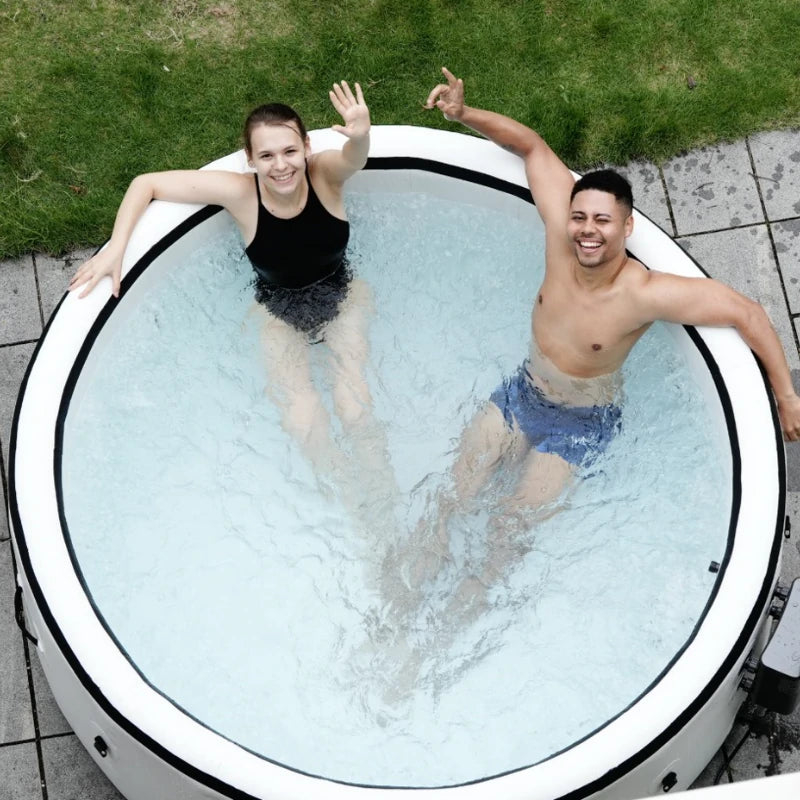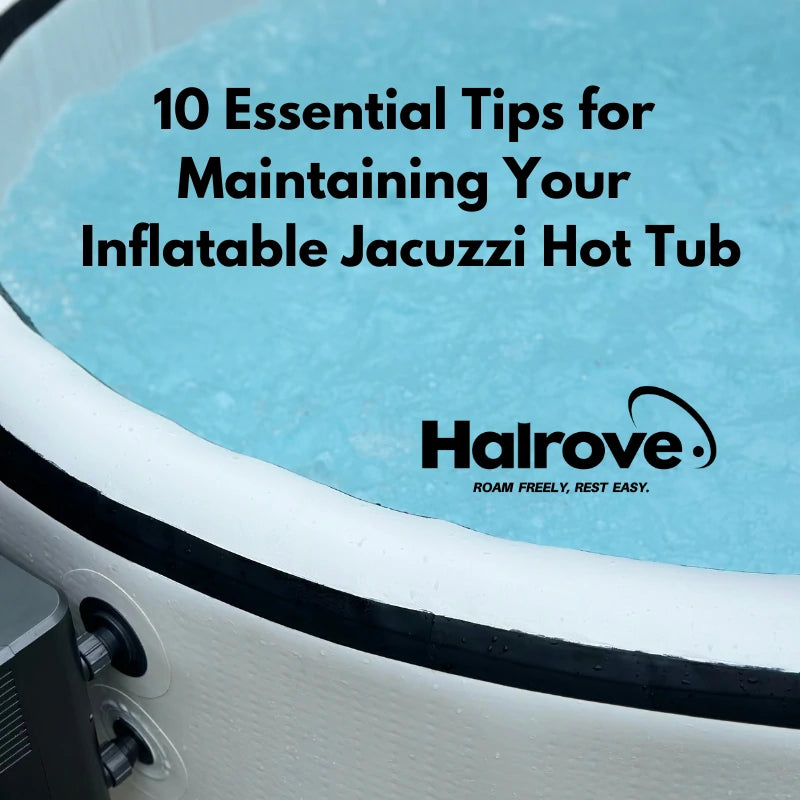1. Affordability and Initial Cost
Pros: Inflatable hot tubs are a budget-friendly option. Traditional hot tubs can cost thousands, but an inflatable tub costs much less. You get what you need to start, without breaking the bank.
Cons: The low upfront cost can be deceiving. Filters, chemicals, and repairs add up over time, increasing the total cost of ownership.

2. Ease of Installation and Portability
Pros: Setting up an inflatable hot tub is simple. Most take less than an hour to inflate and fill. You can move them around, enjoying them in different spots as the seasons change.
Cons: Despite their portability, they need a stable, flat surface. Once filled, they’re heavy and tough to move. Finding the right spot with access to power and water can be tricky if you plan to move it often.

3. Durability and Longevity
Pros: Today’s inflatable hot tubs are more durable than ever. Made from puncture-resistant materials, they can last for years with proper care.
Cons: Even so, they don’t last as long as traditional hot tubs. Punctures, air leaks, and wear are common. Most inflatable tubs have a lifespan of two to five years.

4. Comfort and Features
Pros: Inflatable hot tubs come with features like cushioned seating, adjustable jets, and digital controls. Some even have LED lights and water treatment systems for added luxury.
Cons: But they can’t match the comfort and features of traditional hot tubs. The seating isn’t as supportive, and the jets aren’t as powerful. The range of features is more limited.

5. Maintenance and Upkeep
Pros: Maintenance is straightforward. Cleaning is easy, and regular tasks like changing filters and balancing chemicals don’t need professional help.
Cons: But you need to stay on top of it. Water quality must be monitored regularly, filters changed, and water replaced to keep things clean and safe. Neglect leads to problems like cloudy water and unpleasant smells.

6. Energy Efficiency and Heating
Pros: Many inflatable hot tubs are designed with energy efficiency in mind. Insulated covers and energy-saving heaters help keep costs down, especially in mild climates.
Cons: In colder climates, energy costs rise. Inflatable tubs take longer to heat up and may struggle to maintain temperature, leading to higher energy bills, especially in winter.

7. Comfort vs. Traditional Hot Tubs
Pros: Inflatable hot tubs offer a relaxing experience, especially for those on a budget. They provide a soothing retreat, ideal for occasional use or small gatherings.
Cons: But they don’t offer the same comfort as traditional tubs. Seating is less ergonomic, jets are weaker, and features are fewer. For frequent use, a traditional tub may be more satisfying.

8. Common Drawbacks and Issues
Inflatable hot tubs come with some common issues:
- Noise: The air pump and heater can be loud.
- Limited Seating: They usually seat fewer people, making them less ideal for large groups.
- Wear and Tear: They’re more prone to punctures and leaks.
- Temperature Fluctuations: Maintaining consistent heat can be tough in colder weather.

9. Environmental Impact
Inflatable hot tubs do have an environmental footprint, from production to energy use and disposal. However, choosing energy-efficient models and disposing of them properly can reduce this impact.

10. Is It Worth the Investment? Final Verdict
An inflatable hot tub might be worth it if you value affordability, portability, and ease of use. But if you want something durable and packed with features, a traditional hot tub may be a better long-term choice.
Whether an inflatable hot tub is right for you depends on your priorities. For occasional relaxation, it can be a good investment. For frequent use and long-term comfort, you might want to consider a more permanent option.




